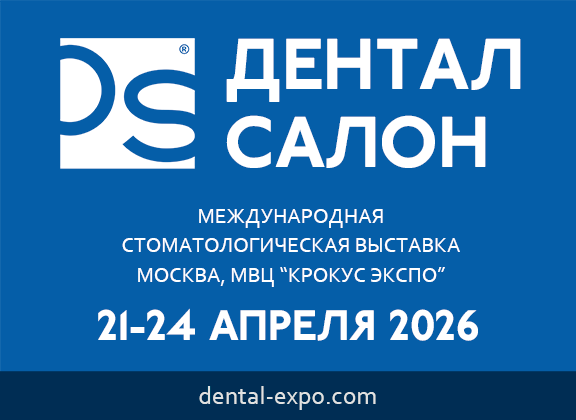DOI:
10.37988/1811-153X_2021_1_75Characteristics and selection of the sedative agents and clinical strategies of intravenous moderate sedation during dental treatment
Downloads
Abstract
As reported in the previous review, midazolam, propofol and their combination are common choices for intravenous moderate sedation of dental outpatients in Japan. In the “Practice Guidelines for Moderate Procedural Sedation and Analgesia 2018”, midazolam and dexmedetomidine are recommended for “sedative/analgesic medications not intended for general anesthesia”, that is moderate sedation. The aim of this review is to introduce modern view of the sedative agents’ characteristics and to present the clinical strategies of intravenous moderate sedation during dental treatment. Practitioners should select the sedative agent or its combination depending on the patient’s condition and coexisting diseases. Suppression of hemodynamic fluctuation is important in the dental treatment of medically compromised patients such as patients with cardiovascular diseases including hypertension and/or ischemic heart disease. Intravenous moderate sedation has stronger sedative effects than inhalation sedation with nitrous oxide (Minimal sedation: Anxiolysis). Both midazolam and propofol are commonly used in phobic and medically compromised patients. In contrast, propofol is a good candidate for patients with gag reflex and receiving prolonged treatment. Patients with acute closed angle glaucoma and myasthenia gravis, and taking HIV protease inhibitor are contraindications of benzodiazepines including midazolam. Systemic condition of the patient should be evaluated before sedation. Practitioners should consult the family doctor and obtain medical information including laboratory data and regular medications. During sedation basic monitoring items include consciousness, oxygenation, ventilation and circulation such as heart rate and blood pressure. In addition, electrocardiography, capnography and bispectra index monitoring may be appended in some patients with coexisting cardiorespiratory diseases or during deep sedation. Airway protective reflex may be to some degree suppressed during moderate sedation. Airway protective reflex may be to some degree suppressed during moderate sedation.Conclusion.
Intravenous moderate sedation has wide range of indications and practitioners can propose safe and comfortable dentistry to the patients.
Key words:
dentistry, anesthesia, sedation, intravenous controlled sedation, combination of sedativesFor Citation
[1]
Ichinohe T. Characteristics and selection of the sedative agents and clinical strategies of intravenous moderate sedation during dental treatment. Clinical Dentistry (Russia). 2021; 1 (97): 75—79. DOI: 10.37988/1811-153X_2021_1_75
References
- Ichinohe T. Clinical practices and education of intravenous moderate/deep sedation in Japan. — Clinical Dentistry (Russia). — 2020; 2 (94): 32—5 (In Russ.).
- Working group on guidelines development for intravenous sedation in dentistry, the Japanese Dental Society of Anesthesiology. Practice Guidelines for Intravenous conscious sedation in dentistry (second edition, 2017). — Anesth Prog. — 2018; 65 (4): e1-e18. PMID: 30702348
- Practice guidelines for moderate procedural sedation and analgesia 2018: A report by the American Society of Anesthesiologists Task Force on moderate procedural sedation and analgesia, the American Association of Oral and Maxillofacial Surgeons, American College of Radiology, American Dental Association, American Society of Dentist Anesthesiologists, and Society of Interventional Radiology. — Anesthesiology. — 2018; 128 (3): 437—79. PMID: 29334501
- Tsugayasu R., Handa T., Kaneko Y., Ichinohe T. Midazolam more effectively suppresses sympathetic activations and reduces stress feelings during mental arithmetic task than propofol. — J Oral Maxillofac Surg. — 2010; 68 (3): 590—6. PMID: 19959271
- Okawa K., Ichinohe T., Kaneko Y. A comparison of propofol and dexmedetomidine for intravenous sedation: a randomized, crossover study of the effects on the central and autonomic nervous systems. — Anesth Analg. — 2010; 110 (2): 415—8. PMID: 20007736
- Huang M.-Y., Matsuura N., Kaneko Y., Ichinohe T. Midazolam increases bite force during intravenous sedation. — J Oral Maxillofac Surg. — 2012; 70 (8): e458—63. PMID: 22704364
- Ninomiya A., Matsuura N., Ichinohe T. Inhalation of 50% oxygen does not impair respiratory depression during midazolam sedation. — J Oral Maxillofac Surg. — 2016; 74 (10): 1932—6. PMID: 27269306
- Sugiyama A., Ichinohe T., Kaneko Y. Effectiveness of propofol intravenous sedation on dental patients with gag reflex. — Journal of Anesthesia. — 1999; 13 Supplement: 388.
- Tsai P.-F., Matsuura N., Kaneko Y., Ichinohe T. Propofol dose-dependently increases bite force during sedation. — J Oral Maxillofac Surg. — 2011; 69 (11): 2746—52. PMID: 21813223
- Mamiya H., Noma T., Fukuda K., Kasahara M., Ichinohe T., Kaneko Y. Pain following intravenous administration of sedative agents: a comparison of propofol with three benzodiazepines. — Anesth Prog. — 1998; 45 (1): 18—21. PMID: 9790005
- Sawaguchi K., Matsuura N., Ichinohe T. Comparison of the Effect of Electrical Stimulations on the Chin Skin on Autonomic Nervous Activities During Propofol Sedation With or Without Midazolam. — J Oral Maxillofac Surg. — 2016; 74 (9): 1751.e1—6. PMID: 27180023
- Hagiwara A., Matsuura N., Ichinohe T. Comparison of changes in respiratory dynamics immediately after the start of propofol sedation with or without midazolam. — J Oral Maxillofac Surg. — 2018; 76 (1): 52—9. PMID: 28672136
- Tomita S., Matsuura N., Ichinohe T. The combined effects of midazolam and propofol sedation on muscle power. — Anaesthesia. — 2013; 68 (5): 478—83. PMID: 23521655
- Matsuki Y., Sakurai S., Ichinohe T., Kaneko Y. Selection of agents for intravenous sedation in the Department of Dental Anesthesiology, Tokyo Dental College Chiba Hospital — On the basis of patient's background. — Dentistry in Japan. — 2007; 43: 131—4.
Downloads
Received
December 16, 2020
Published on
March 1, 2021










